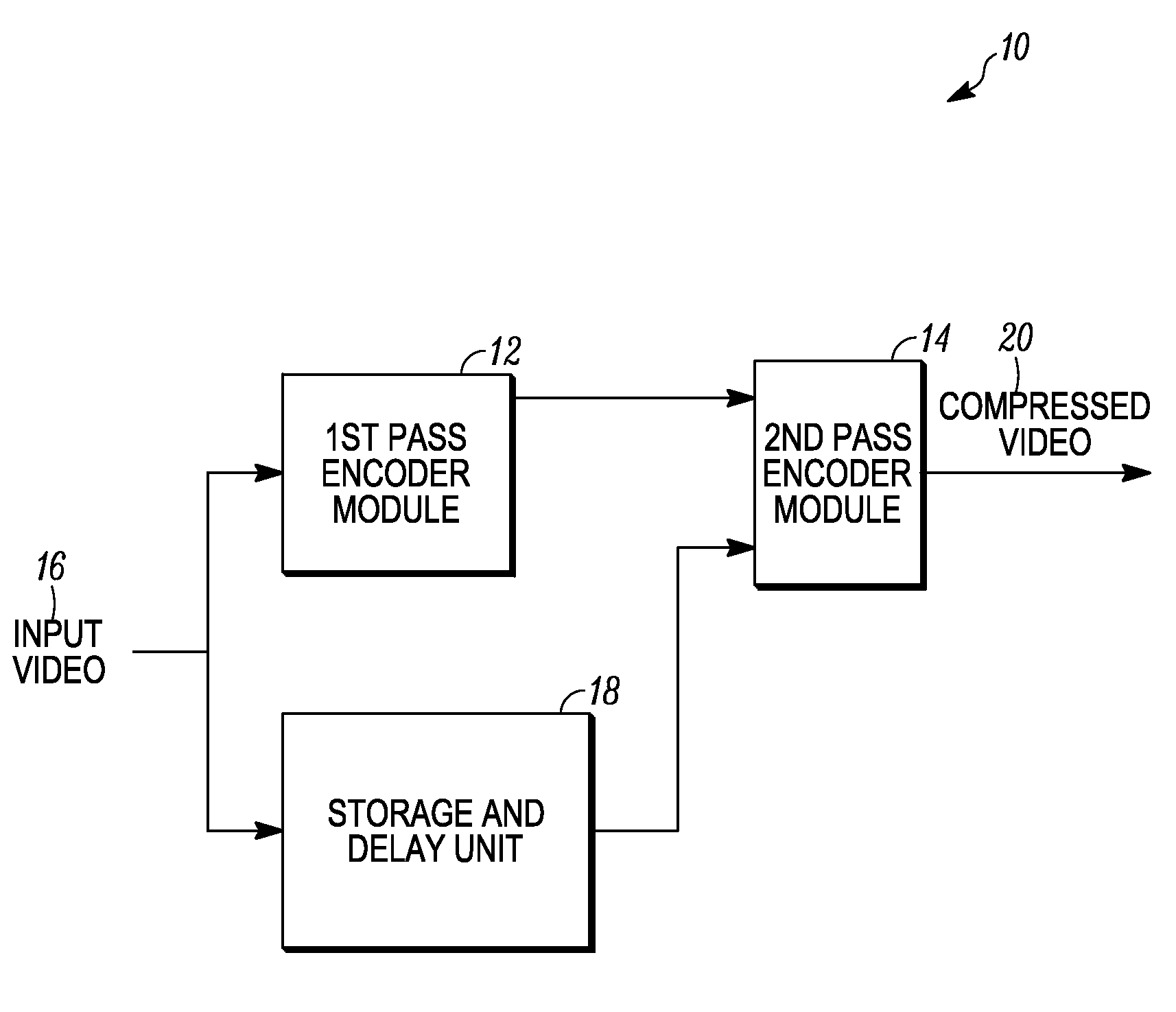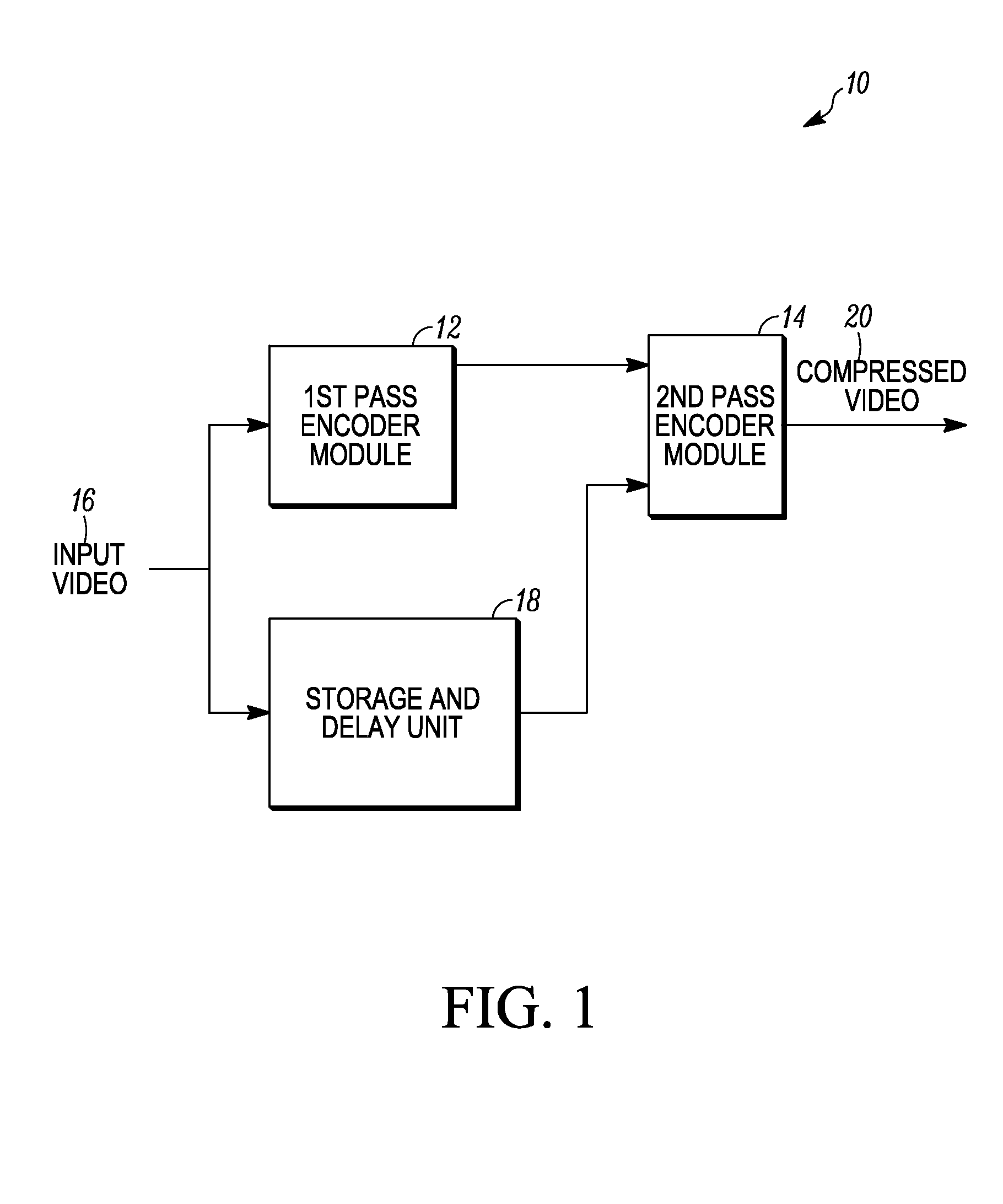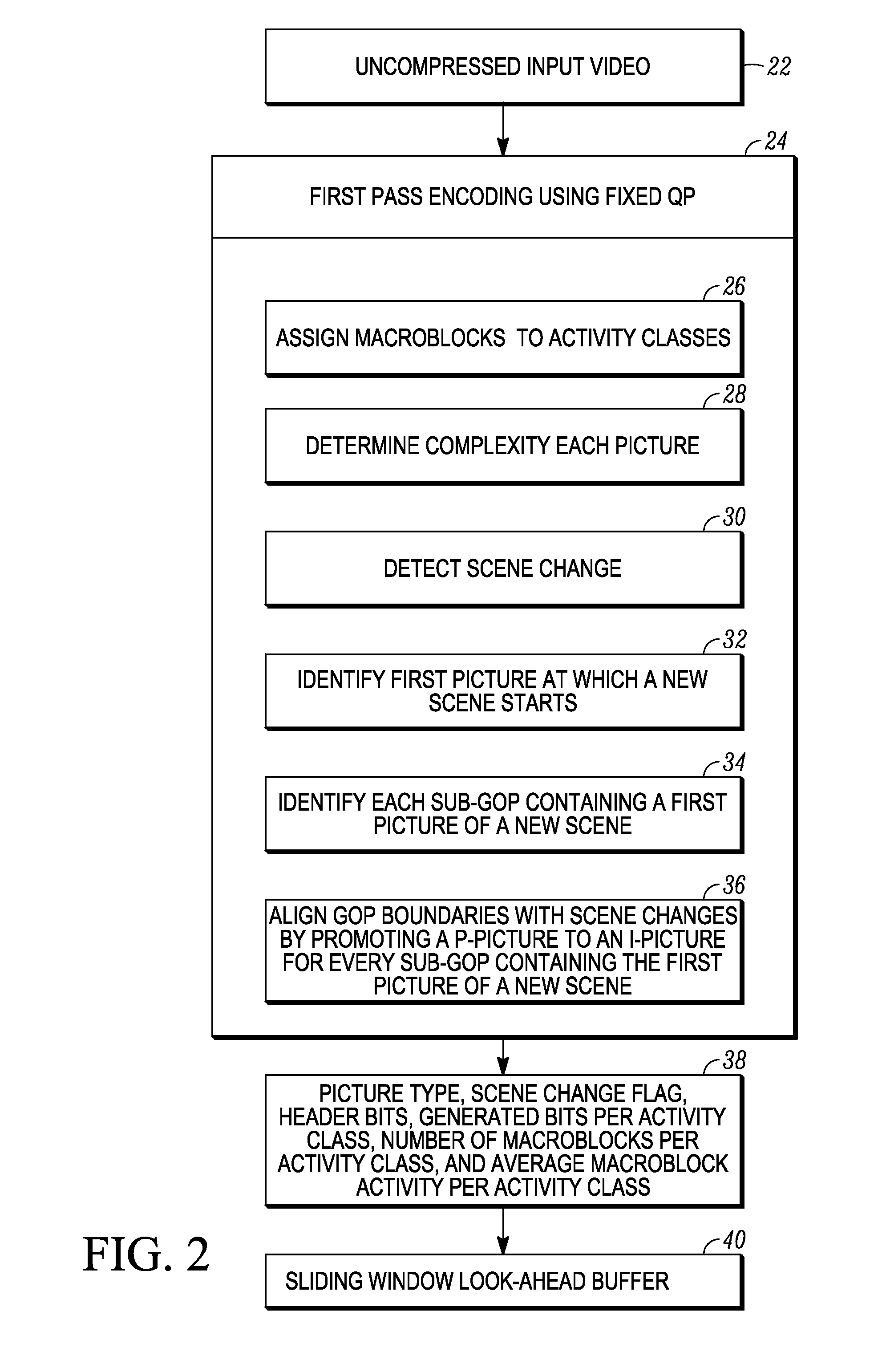Method and apparatus for dual pass rate control video encoding
a dual-pass rate control and video encoding technology, applied in signal generators with optical-mechanical scanning, color televisions with bandwidth reduction, television systems, etc., can solve the problems of affecting video quality, complexity information always lags behind the actual encoding process, and the complexity of a frame or picture is not known until
- Summary
- Abstract
- Description
- Claims
- Application Information
AI Technical Summary
Benefits of technology
Problems solved by technology
Method used
Image
Examples
Embodiment Construction
[0019]For simplicity and illustrative purposes, the principles of the embodiments are described by referring mainly to examples thereof. In the following description, numerous specific details are set forth in order to provide a thorough understanding of the embodiments. It will be apparent however, to one of ordinary skill in the art, that the embodiments may be practiced without limitation to these specific details. In some instances, well known methods and structures have not been described in detail so as not to unnecessarily obscure the embodiments.
[0020]FIG. 1 illustrates a block diagram of a two-pass MPEG encoder 10 having a first pass encoder module 12 and a second pass encoder module 14 receiving the same input video sequence 16. The input video sequence 16 passes through a storage and delay unit 18 before being input into the second pass encoder module 14 to provide a delay between first encoding pass in the first pass encoder module 12 and second encoding pass in the seco...
PUM
 Login to View More
Login to View More Abstract
Description
Claims
Application Information
 Login to View More
Login to View More - R&D
- Intellectual Property
- Life Sciences
- Materials
- Tech Scout
- Unparalleled Data Quality
- Higher Quality Content
- 60% Fewer Hallucinations
Browse by: Latest US Patents, China's latest patents, Technical Efficacy Thesaurus, Application Domain, Technology Topic, Popular Technical Reports.
© 2025 PatSnap. All rights reserved.Legal|Privacy policy|Modern Slavery Act Transparency Statement|Sitemap|About US| Contact US: help@patsnap.com



